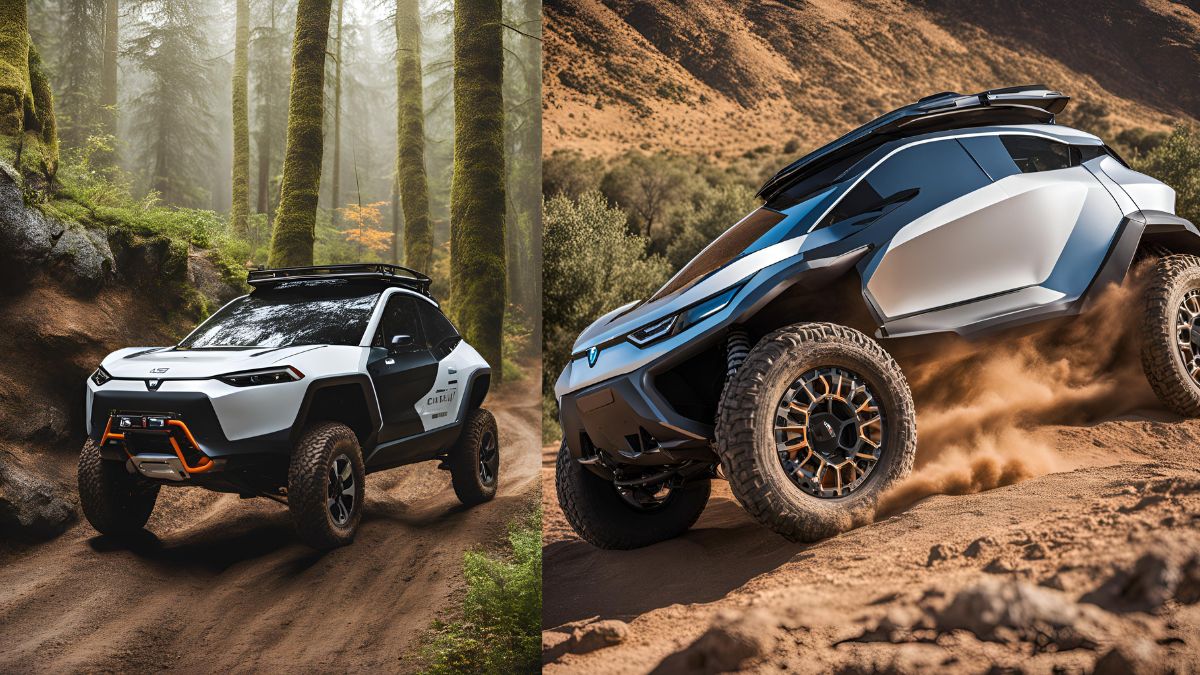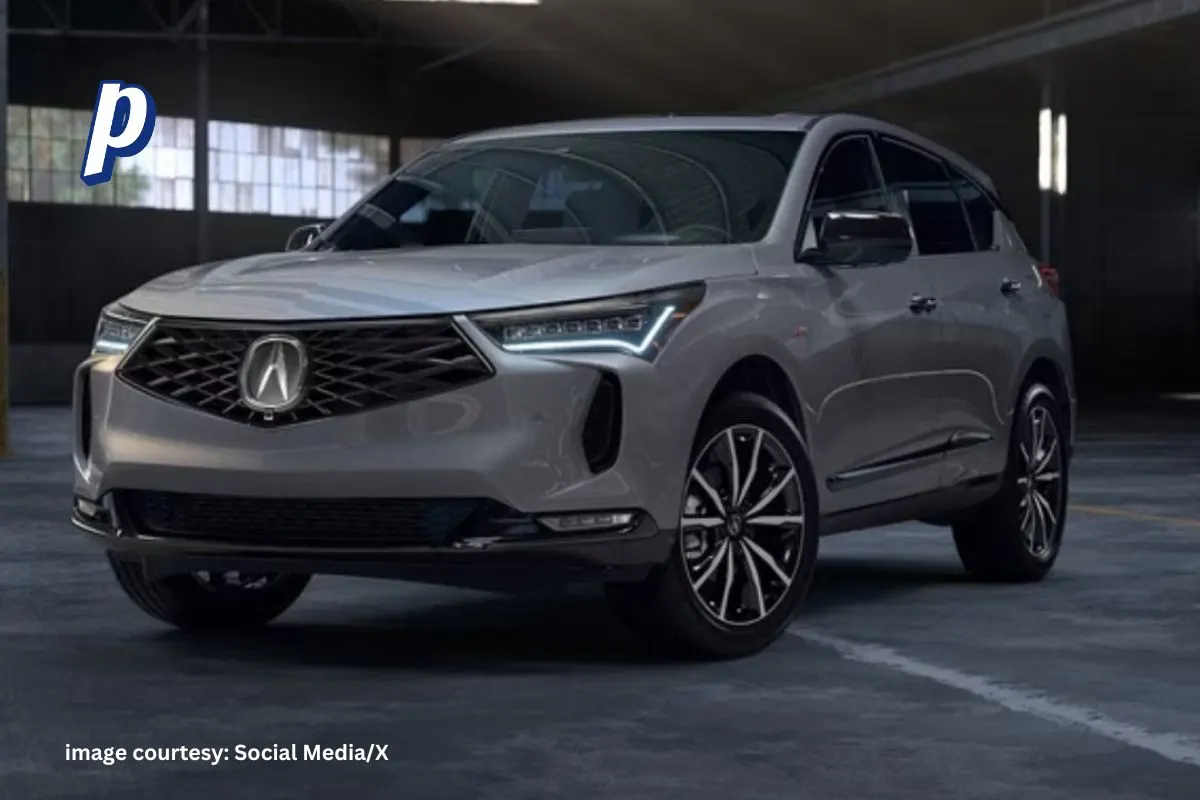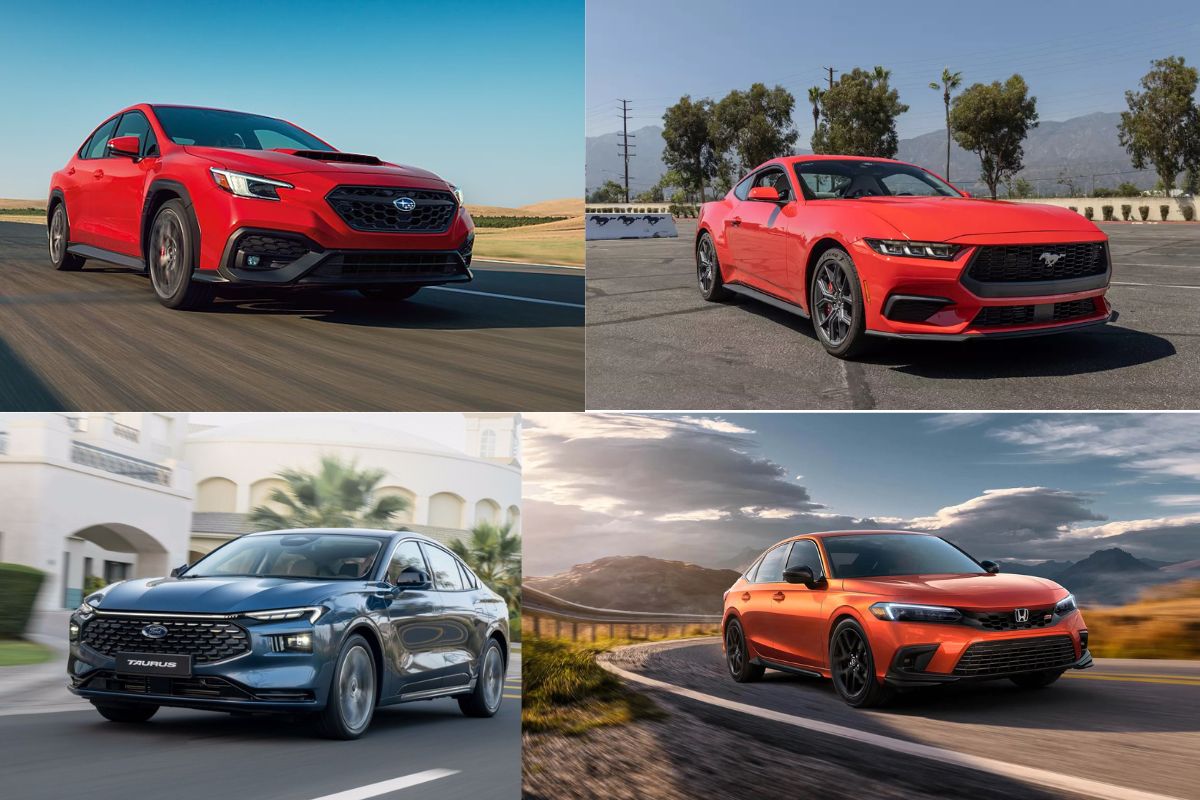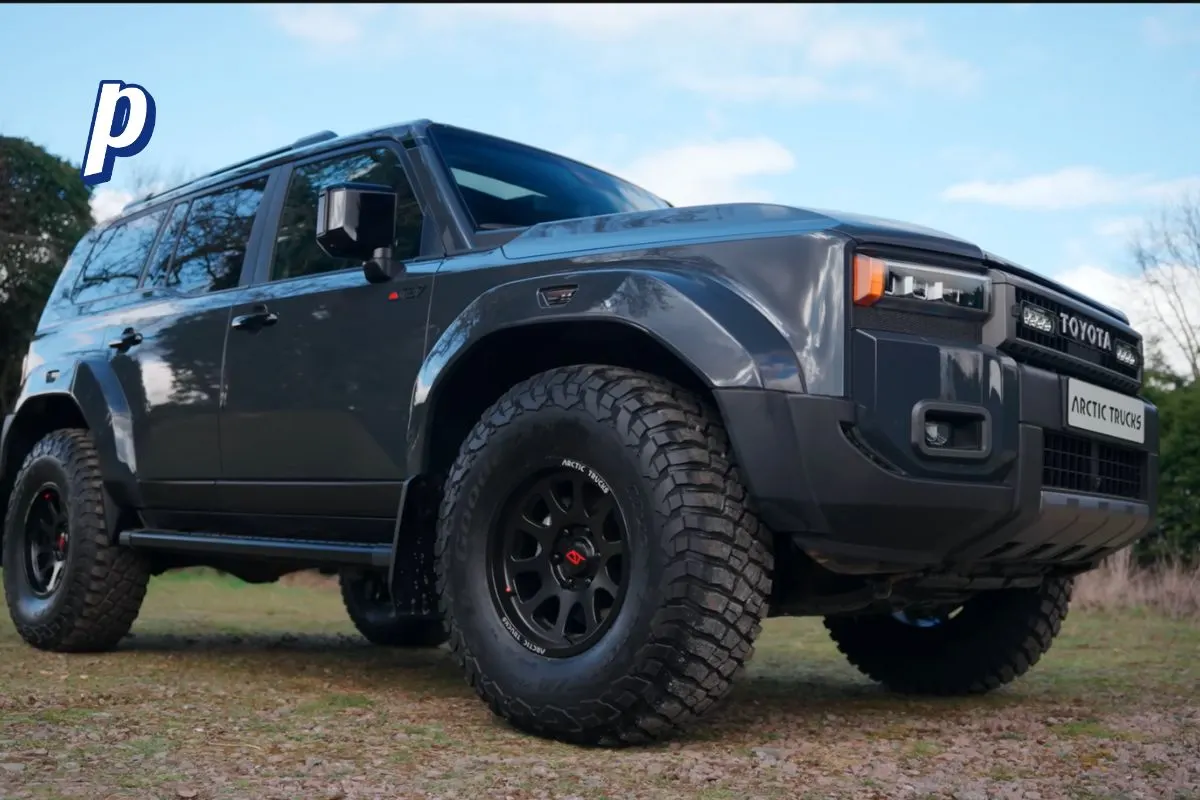Learn how electric vehicles are transforming off-roading with instant torque, regenerative braking, and eco-friendly benefits. Discover the future of off-road EVs and what you can expect from electric 4x4s in rugged terrains.
The rise of electric vehicles (EVs) has significantly changed the dynamics of the automotive world, and off-roading is no exception. What once was a realm dominated by diesel- and gasoline-powered behemoths, the off-road community is witnessing a transformation brought by electric 4x4s and SUVs. Electric vehicles are proving their worth in even the most rugged terrains, bringing efficiency, sustainability, and exciting new technologies to off-roading adventures. This article delves into how EVs are revolutionizing the off-road experience, from advancements in technology to the key challenges and what off-road enthusiasts can expect in the coming years.
The Rise of Electric Off-Road Vehicles: An Introduction
Electric vehicles have come a long way in the past decade. As major automotive manufacturers like Tesla, Rivian, and Ford enter the EV market, the possibilities for off-roading with EVs are expanding. Traditionally, the off-roading experience has relied heavily on the raw power of internal combustion engines (ICEs). However, EVs are beginning to challenge this norm with their instant torque delivery, advanced electric motors, and sustainable energy consumption.

The shift toward electrification isn’t just about being eco-friendly. EVs are designed with a host of benefits that can outperform ICE vehicles in off-road scenarios. As battery technologies evolve and off-road-capable EVs like the Rivian R1T, GMC Hummer EV, and the Tesla Cybertruck gain popularity, adventurers and weekend warriors alike are starting to see the potential electric vehicles bring to off-road escapades.
How EV Technology is Shaping the Off-Road Experience
2.1 Instant Torque: A Game-Changer for Off-Roading
One of the primary advantages EVs offer in off-road conditions is their ability to deliver instant torque. Unlike traditional gasoline-powered engines, which have a torque curve, electric motors deliver peak torque from a standstill. This makes climbing steep inclines or powering through mud and sand much easier in an electric off-roader.
The instant torque allows for better traction in low-speed conditions, which is essential for off-roading. With the use of specialized off-road tires, EVs like the Rivian R1S and Ford F-150 Lightning can maintain grip and handle rugged terrain more effectively than many of their ICE counterparts.
2.2 Regenerative Braking: Enhanced Control and Energy Efficiency
Regenerative braking is another key feature of EVs that benefits off-roading. In challenging conditions, such as downhill descents, regenerative braking helps to slow the vehicle down by using the electric motor to recapture kinetic energy, which recharges the battery. This not only improves energy efficiency but also provides enhanced control when navigating steep declines.
Drivers can use regenerative braking to maintain a constant speed on tricky terrain, offering a level of finesse that is difficult to achieve with traditional brakes. This feature also reduces brake wear and heat generation, further benefiting long-term performance in harsh environments.
read more: The Future of Off-Roading: How Electric 4x4s Will Change the Game
2.3 Advanced Traction and Stability Systems
EVs are often equipped with advanced traction and stability control systems that are crucial for off-roading. Because electric motors can be independently controlled, EVs offer improved torque vectoring capabilities. For example, each wheel can receive a different amount of power depending on the traction needed at any given moment, making it easier to handle unpredictable off-road surfaces like loose gravel or deep snow.
In electric 4x4s, these systems can be programmed to simulate locking differentials and other off-road features, enabling drivers to conquer difficult terrain without mechanical complexity. This digital precision provides greater control and adaptability, especially on mixed terrains that shift from rock to sand to mud.
Sustainability and Off-Roading: A Greener Future
3.1 Reducing the Carbon Footprint of Off-Roading
One of the most significant benefits of EVs in the off-roading world is their contribution to reducing the environmental impact of outdoor activities. Traditional off-road vehicles are notorious for their high emissions and low fuel efficiency, especially during off-road adventures that involve lots of stop-and-go movement, steep climbs, and low-speed driving.
Electric off-road vehicles, on the other hand, produce zero tailpipe emissions. This is crucial for protecting natural landscapes from pollution, keeping the air cleaner, and minimizing the environmental impact of off-road adventures. As more electric off-roaders hit the trails, the off-road community is poised to become much more eco-friendly.
3.2 Off-Grid Charging Solutions for Off-Road Adventures
One of the biggest challenges EV owners face when off-roading is the issue of charging in remote locations. Since traditional charging infrastructure is typically designed for urban or suburban environments, off-roaders need alternative solutions for keeping their vehicles powered during long expeditions.
Portable solar panels, solar-powered charging stations, and auxiliary battery systems are becoming more common and can offer off-road adventurers ways to stay charged without needing to return to the grid. Some EV models, such as the Rivian R1T, even feature onboard charging capabilities for portable electronics and camping equipment, making them a perfect fit for off-grid explorers.
Electric 4×4 Performance in Extreme Terrains
4.1 EVs in Mud and Sand: Thriving in Loose Terrain
Mud and sand are notoriously difficult terrains for many off-road vehicles, as they require careful management of traction and power. The torque delivery and instant response of electric motors make EVs well-suited for these challenging conditions. Vehicles like the GMC Hummer EV and Rivian R1T, which come equipped with dedicated off-road driving modes, perform exceptionally well in these scenarios by distributing torque effectively across all four wheels.
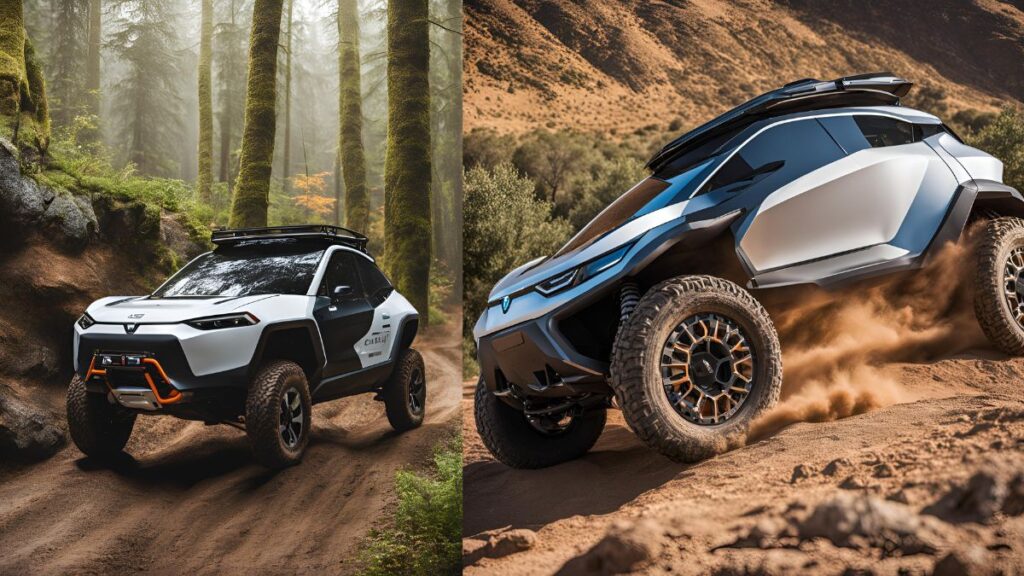
EVs also benefit from a low center of gravity due to the placement of the battery pack, improving stability and reducing the risk of getting stuck in deep mud or soft sand. Additionally, the ability to fine-tune traction control settings in real-time enhances the vehicle’s capability to conquer shifting and unstable surfaces.
4.2 Rock Crawling with Electric Precision
Rock crawling requires a delicate balance of control, torque, and vehicle articulation. EVs are ideally suited for this kind of off-roading due to their precise power delivery. Unlike gas-powered vehicles that may require complex gearing to tackle rocks, electric off-roaders can rely on their direct drive systems and torque-on-demand to navigate rocky landscapes with precision.
Electric SUVs and trucks offer unparalleled low-speed control, which is essential for safely climbing over large rocks and boulders. Some electric off-roaders even feature cameras and sensors that provide enhanced visibility, allowing drivers to navigate technical rock-crawling paths with ease.
4.3 Water Fording: The Electric Off-Roading Challenge
While EVs offer many advantages for off-roading, water fording remains a challenge that manufacturers are actively addressing. Traditional off-road vehicles have air intakes and exhaust systems that must be carefully managed to avoid water damage, but electric vehicles have fewer of these concerns since they lack an internal combustion engine. However, EVs must still protect their battery packs and electric systems from water intrusion.
Leading manufacturers like Tesla and Rivian are investing in waterproofing technologies to ensure that electric vehicles can safely cross rivers and navigate through deep water without compromising performance. In fact, the Rivian R1T has a water fording depth of over three feet, showcasing that EVs are becoming more capable in aquatic off-road scenarios.
The Future of Off-Roading: What to Expect from EVs
As EV technology continues to evolve, the future of off-roading is looking increasingly electric. Here’s what off-road enthusiasts can expect in the coming years:
5.1 Longer Battery Ranges for Extended Off-Road Adventures
One of the main concerns with off-road EVs is their battery range. However, advancements in battery technology are likely to address this issue. Solid-state batteries, which offer higher energy density and faster charging times, are expected to become the norm in the next decade, allowing electric off-roaders to tackle longer and more remote trails without the need to recharge.
5.2 Enhanced Charging Networks for Off-Roaders
As the popularity of off-road EVs grows, so too will the demand for off-grid charging solutions. Manufacturers and third-party companies are likely to develop mobile charging stations that can be deployed in remote areas, allowing off-roaders to stay powered no matter how far they venture off the beaten path.
Conclusion
Electric vehicles are revolutionizing the off-road experience by providing instant torque, advanced traction systems, and sustainability benefits that traditional gas-powered vehicles can’t match. From handling tough terrains like mud, sand, and rocks with ease, to contributing to a cleaner environment, EVs are changing the game for off-road enthusiasts. As technology continues to advance, the future of off-roading will undoubtedly be electric, offering even more exciting opportunities for adventure.
